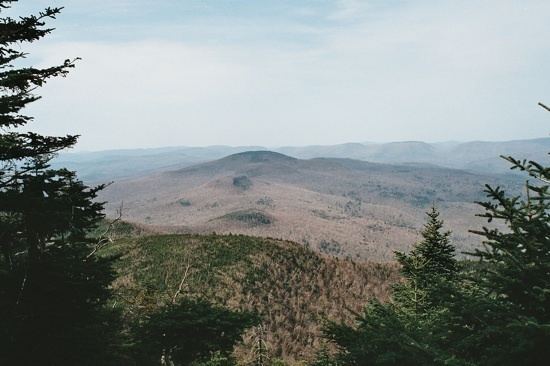Visitors 23,000 (in 2003) Established 1985 | Area 192.2 km² Nearest city Kingston | |
 | ||
Governing body New York State Department of Environmental Conservation | ||
The Slide Mountain Wilderness Area is, at 47,500 acres (19,200 ha), the largest tract of state-owned Forest Preserve in New York's Catskill Park, and the largest area under any kind of wilderness area protection between the Adirondacks and the southern Appalachians. It is located in the towns of Shandaken, Denning and Olive in Ulster County.
Contents
LocationEdit
Within those three towns, the Slide Wilderness might be better described as contained within the lands bounded on the north roughly by Esopus Creek and Route 28, the east by Ulster County Route 42 (known in different towns as Sundown Road or Peekamoose Road) almost to the shores of Ashokan Reservoir, the west by Ulster County Route 47, and on the south by Sugarloaf Road and Red Hill Road.
The area's wilderness character is buffered not only by restrictive local zoning and conservation of neighboring private lands but also by bordering on two other large state-owned tracts, the Big Indian-Beaver Kill Wilderness Area to the west and the Sundown Wild Forest to the east.
HistoryEdit
While the wilderness area designation is rather recent, formally dating to the 1985 adoption of the Catskill State Land Master Plan, the area has been part of New York's constitutionally-protected Forest Preserve for a century before that. Ironically, the lands around Slide Mountain were added to the original legislation not for conservation purposes, but to settle a tax debt Ulster County owed to the state.
ManagementEdit
The SMWA, like all lands in the state's Forest Preserve, is managed by the Division of Lands and Forests within New York's Department of Environmental Conservation. DEC is the successor agency to the Conservation Department, Conservation Commission and Forest Commission, all of which managed the lands in prior eras.
The forest rangers of DEC's Office of Public Protection provide law enforcement services to the unit.
New York's wilderness-area management guidelines are similar to, if a bit looser than, those followed by the federal government. Any development of new facilities within the unit requires a change to the Unit Management Plan (UMP), or is added only at the UMP's periodic updates, both of which require public comment and extensive review. The UMP is itself governed not only by the state's Environmental Conservation Law but Article 14 of the state constitution, which requires that the Forest Preserve be kept "forever wild" and free for public use beyond any reasonable fee required for a particular activity.
In a departure from the usual practice of most American public land management, the state pays full property taxes on the lands to all local governmental entities as if it were a commercial landowner.
Recreational useEdit
Use of the land is limited to minimal-impact passive recreation such as hiking, camping, hunting and angling. No powered vehicles are allowed within (The use of chainsaws for trail maintenance is also permitted only by explicit written authority of the DEC commissioner).
There are no designated equestrian trails within the wilderness. While mountain bike usage is currently a matter of debate as the CPSLMP is updated, and not specifically prohibited, it does not seem likely that it will be allowed.
No structures may be erected on the land except those DEC creates within UMP guidelines. Tents are permitted; hunters' tree stands are not.
As of 2005 there are 35.3 miles (56.8 km) of officially maintained and marked trails (more are planned). There are three lean-tos, and 29 officially-designated campsites in the wilderness area. Outside of those, camping is not permitted within 150 feet (45.7 m) of any trail, road or stream. In areas above 3,500 feet (1,067 m) in elevation, it is only allowed between December 21 and March 21, when snow protects the ground. Open fires are forbidden above that location as well.
It is the most popular of the four wilderness areas currently located within the Catskill Park.
AccessEdit
The state has built 10 separate parking lots along or near roads that abut the Slide wilderness, five of which serve as hiking trailheads.
The sixth trail, the east end of the Burroughs Range Trail which traverses Wittenberg, Cornell and Slide Mountains, starts at the Woodland Valley State Campground, which adjoins the wilderness area. Similarly, camping is available at the southeast corner in the Peekamoose Valley Wild Forest, near the Bull Run trailhead.
There is also a trail referred to as the Dutcher Step Trail that traverses the private property of the Winnisook Club. Anyone attempting to hike this trail should seek permission from the club first. The trail has some interesting views that the main trail does not. The club seems willing to allow hikers on a limited basis as long as you leave the trail as you found it and sign a release first.
